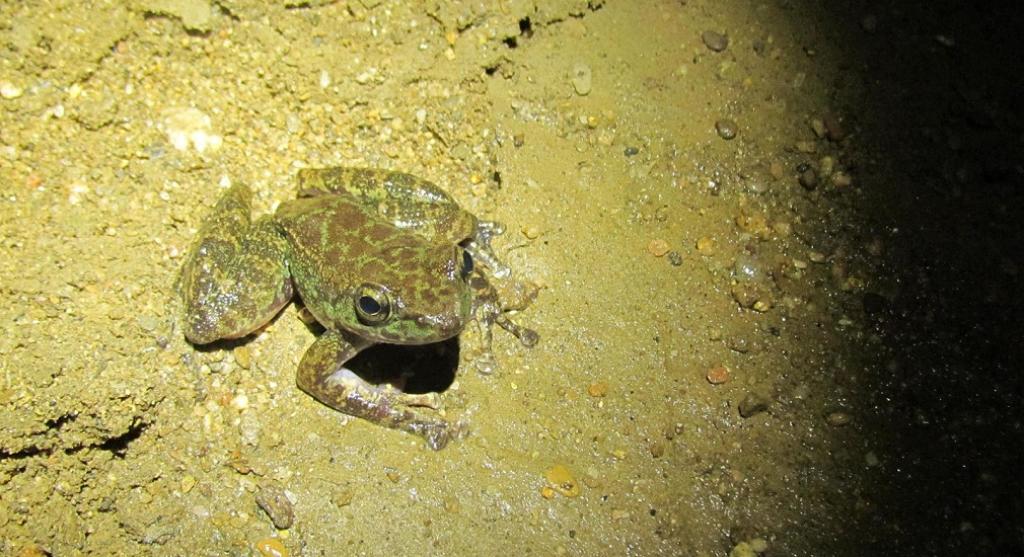Rapid Fire
Rapid Fire Current Affairs
- 17 Apr 2023
- 6 min read
New Species Cascade Frog -Amolops Siju
Researchers from the Zoological Survey of India (ZSI) have discovered a new species of frog, which they named Amolops Siju, from the Siju cave in the South Garo Hills district of Meghalaya. The Amolops Siju belongs to the largest group of ranid frogs, with over 70 known species distributed across northeast and north India, Nepal, Bhutan, China, and the Malaya Peninsula.
The discovery of a new species of frog from a cave is very rare, and it is the fourth new species of a cascade frog (Amolops). Cascade Frogs are named so because of their preference for small waterfalls or cascades in flowing hill streams.
NCLT Grants 90 days Extension for Future Retail Ltd. (FRL)
Future Retail Ltd. (FRL) has been granted an extension of 90 days by the National Company Law Tribunal (NCLT) to conclude its Corporate Insolvency Resolution Process (CIRP). The CIRP was initiated against FRL by NCLT in July 2022 after the company defaulted on its loans. As per Section 12(1) of the Insolvency and Bankruptcy Code (IBC), the resolution process should be completed within 330 days, which includes time taken for litigation. Within 180 days of initiation, the CIRP must be completed, but NCLT may grant a one-time extension of 90 days. The maximum time for completing the CIRP, including extensions and litigation, is 330 days
NCLT was constituted under the Companies Act, 2013 w.e.f. 01st June 2016 based on the recommendation of the Justice Eradi committee on the law relating to insolvency and winding up of companies. NCLT is a quasi-judicial body that adjudicates issues relating to Indian companies. The IBC proposed two tribunals to adjudicate insolvency resolution cases- the NCLT adjudicates cases for companies and limited liability partnerships and the Debt Recovery Tribunal which will adjudicate cases for individuals and partnership firms.
Read more: Pre-Pack Insolvency Resolution Process, National Company Law Tribunal (NCLT)
James Webb telescope Spots Compact Galaxy
The James Webb Space Telescope's latest discovery of a highly compact galaxy formed shortly after the Big Bang is revolutionizing our understanding of the early universe. The galaxy, which existed around 13.3 billion years ago, is about 1,000 times smaller than the Milky Way but forms new stars at a rate comparable to our present-day galaxy. This finding challenges the conventional understanding of galaxy formation in the early universe, indicating that the first galaxies may be very different from those that exist today, and our usual assumptions about galaxy properties may not apply in the early universe.
The galaxy's chemical composition also differs from present-day galaxies due to a scarcity of heavier elements at the time of its formation. Observing this galaxy was aided by "Gravitational lensing" phenomena. Gravitational lensing is a phenomenon where a large group of galaxies creates a strong gravitational field that bends and magnifies the light coming from distant galaxies behind it.
Read more: James Webb Space Telescope, Big Bang
Uttaramerur Inscription
Indian Prime Minister recently referred to the Uttaramerur inscription in Kanchipuram, Tamil Nadu, while discussing India's democratic history. The inscription, dating back to the reign of Parantaka I (907-953 AD), provides a detailed description of how the village's self-governance functioned. Historians and political leaders often cite the inscription as evidence of India's long history of democratic functioning. Uttaramerur, located in the present-day Kanchipuram district, is a small town known for its historic temples built during Pallava and Chola rule. The famous inscription from Parantaka I's reign can be found on the walls of the Vaikunda Perumal Temple.
The inscription describes how the local sabha, or village assembly, functioned. It outlines how members were selected, the qualifications required, and their roles and responsibilities, including specialized committees tasked with different functions. The sabha was exclusively composed of brahmans, and the inscription detailed the circumstances in which members could be removed. The inscription also described the various committees within the sabha, their responsibilities, and their limitations. These committee assignments lasted for 360 days, after which members had to retire.
Sabha membership was restricted to a tiny subsection of land-owning brahmans, and there were no true elections. Rather, members were chosen from an eligible pool of candidates through a draw of lots. However, the inscription should be cited as a precedent for democratic functioning. The inscription is like a constitution. If the rule of law is an essential component of a democracy, the Uttaramerur inscription describes a system of government that follows just that.







